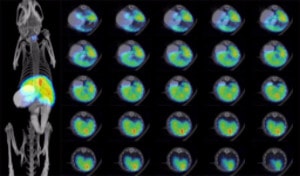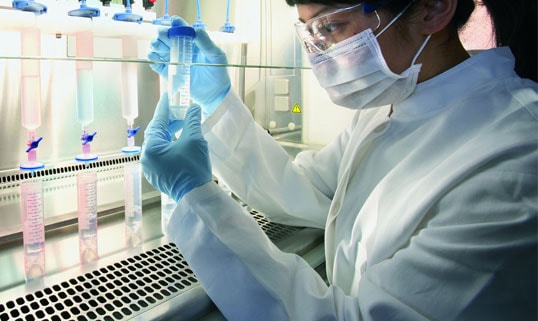B16F10-iRFP-Puro
- Frozen / Standard (CL099-STAN) $ 1,500
Species: Mouse
Cell type: Melanoma
Transgenes: Near-infrared fluorescent protein (iRFP, excitation/emission: 690/713nm) with puromycin resistance (Puro) for selection with puromycin
Media: DMEM, 10% FBS, 1% Pen/Strep, 1 μg/mL puromycin
Description: B16F10-iRFP-Puro is a polyclonal population of the murine melanoma cell line B16F10 (ATCC® CRL-6475™) transduced with a lentiviral vector LV-iRFP-P2A-Puro (LV032) encoding the near-infrared fluorescent protein (iRFP) cDNA under the spleen focus-forming virus (SFFV) promoter linked to the puromycin resistance gene (Puro) via a P2A cleavage peptide.
The lentiviral vector used is a self-inactivating (SIN) vector in which the viral enhancer and promoter has been deleted. Transcription inactivation of the LTR in the SIN provirus increases biosafety by preventing mobilization by replication competent viruses and enables regulated expression of the genes from the internal promoters without cis-acting effects of the LTR (Miyoshi et al., J Virol. 1998).
Mycoplasma Testing: The B16F10-iRFP-Puro cell line has been tested for mycoplasma contamination and is certified mycoplasma free.
Cell Line Authentication: The parental B16F10 cell line was authenticated and certified free of interspecies cross-contamination by short tandem repeat (STR) profiling with 27 STR loci.
Recommended uses:
In vitro: This is a high iRFP expressing cell line suitable for use as a positive control cell line to verify iRFP expression in your lentiviral transduced cells.
In vivo: B16F10 cells form tumors post implantation into mice. The in vivo growth of these tumors can be monitored using noninvasive optical imaging for iRFP.
Please ensure that your optical imaging system has the correct excitation and emission filters for detection of iRFP (excitation/emission: 690/713nm).
Morphology: Low- and high-density cell morphology (200x)

Flow Cytometry for iRFP: B16F10-iRFP-Puro (red) or control (B16F10; grey) cells were fixed with paraformaldehyde and analyzed by flow cytometry (20,000 events).


